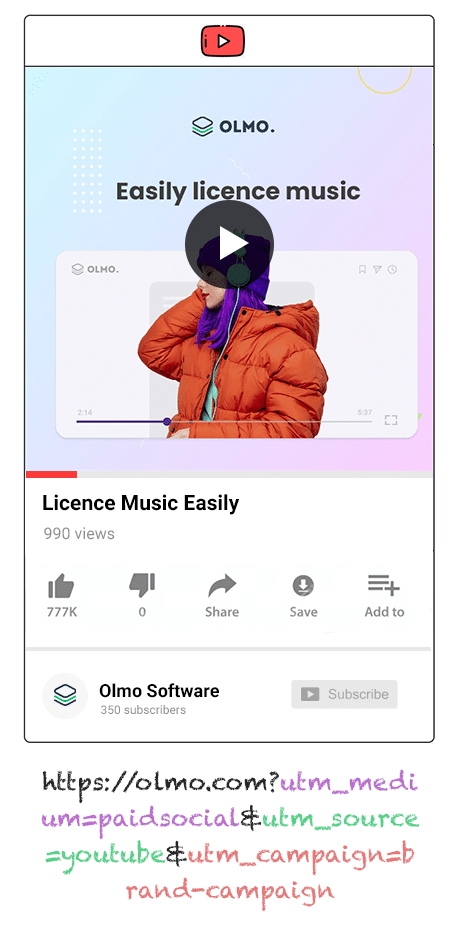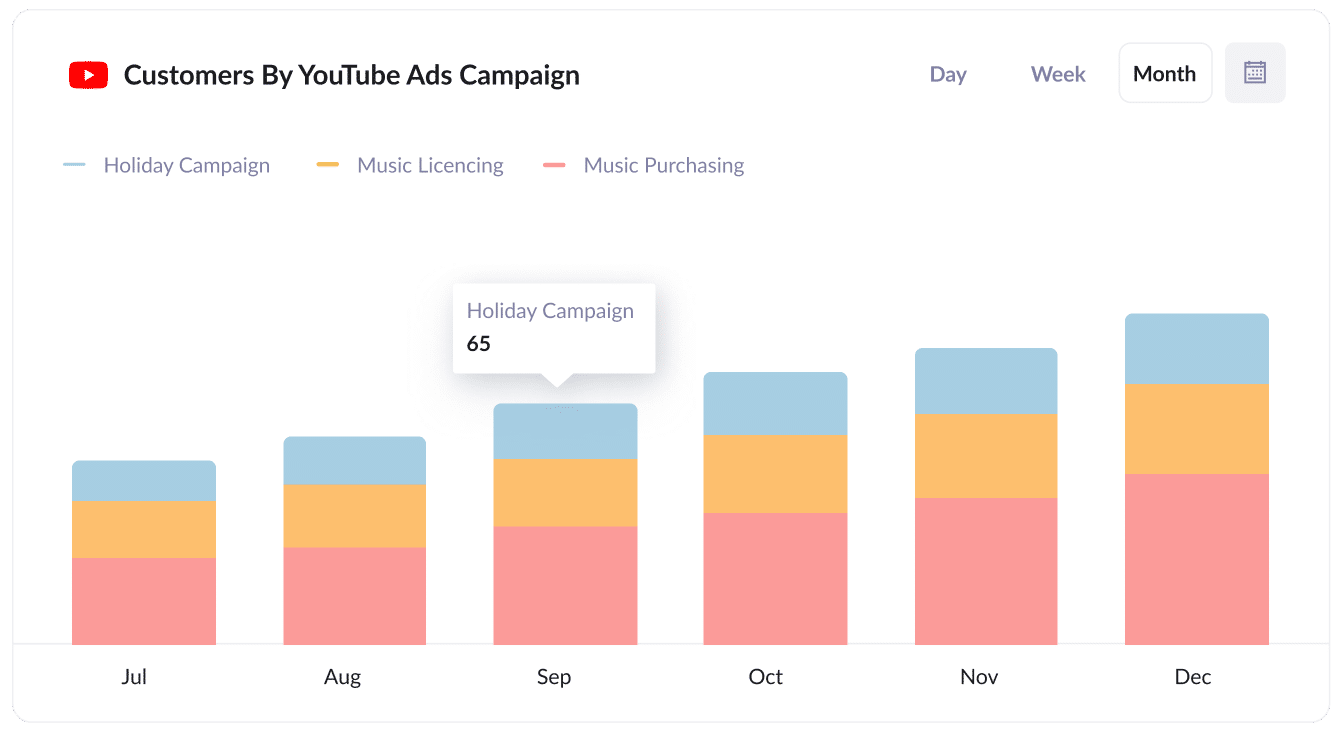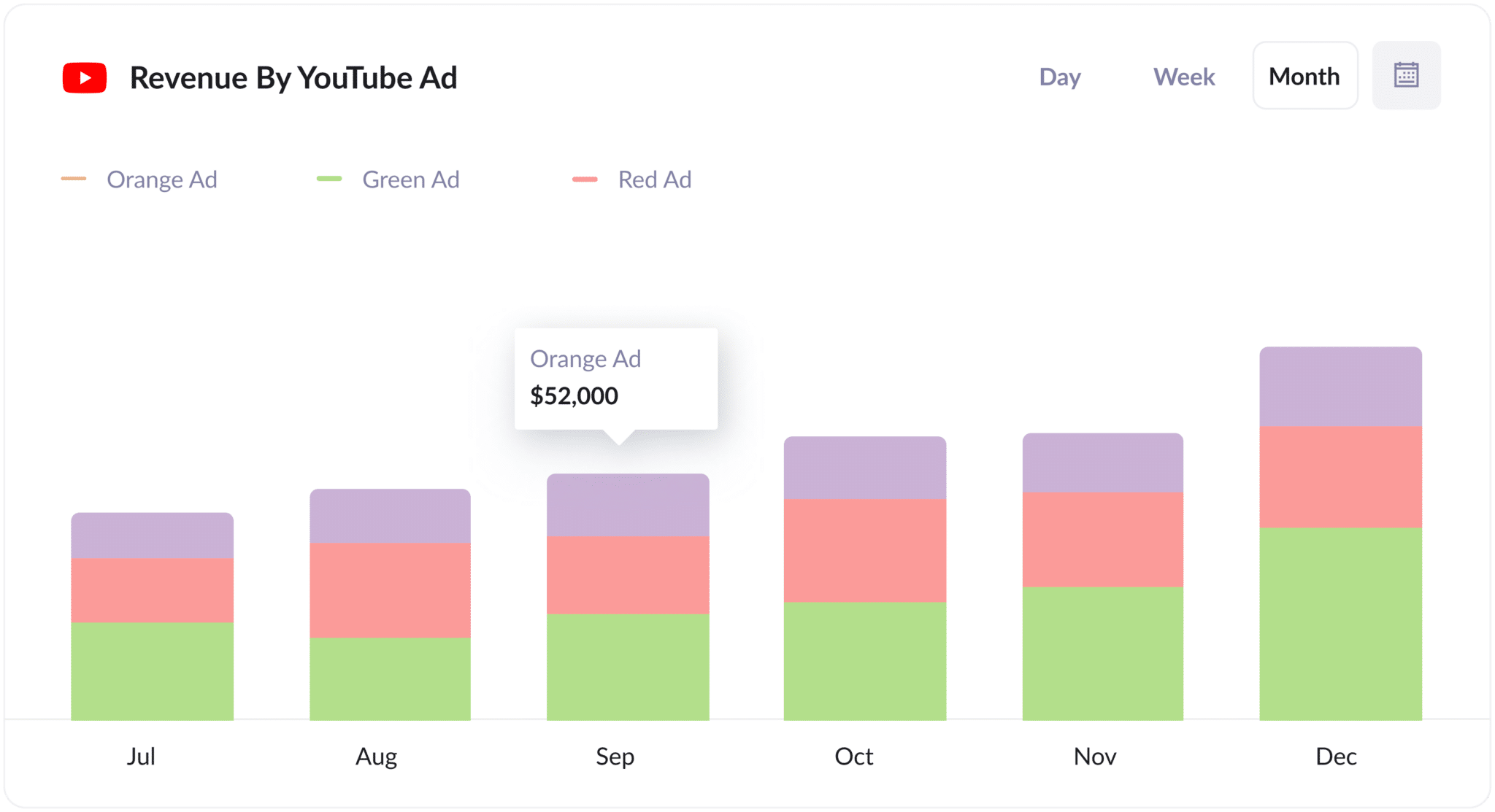Track how many leads you get from your YouTube Ads in Elementor forms
Uncover where your leads & customers are coming from by tracking your YouTube Ads in Elementor Forms with Attributer.

Did you know that paid YouTube Ads are 84% more likely to receive viewers' attention than TV ads? In other words, YouTube Ads are a goldmine for businesses.
But how can you figure out which ads are actually resonating with viewers and generating leads and customers?
In this guide, we break down how you can use a tool called Attributer to capture YouTube Ads data in Elementor forms and send it to your CRM and other tools, so you can ultimately run reports that show how many leads & customers you've gotten from your ads.
4 simple steps for tracking YouTube Ads in Elementor forms
To get started capturing YouTube Ads data in Elementor forms, follow these four simple steps:
1. Add UTM parameters to your ads

Begin by tacking UTM parameters onto your URL's you send people to from your YouTube Ads. If you haven't heard of them before, UTM parameters are short bits of text that allow you to see how users have arrived on your website.
Consider the following example: you’re running a YouTube Ad directing traffic to attributer.io/integrations/elementor-forms. After incorporating UTM parameters, your URL will look more like this:
attributer.io/integrations/elementor-forms?utm_medium=paidsocial&utm_source=youtube&utm_campaign=brand-campaign
While you have the freedom to customise your UTM parameters, we suggest sticking to this format for YouTube Ads:
- UTM Medium = paidsocial
- UTM Source = youtube
- UTM Campaign = [the name of your campaign]
- UTM Term = [The name of your ad]
2. Add hidden fields to your forms

Step two is incorporating hidden fields in your lead capture forms (i.e. the forms designed to collect information from your site visitors, such as your contact us form or request a quote form).
Below, you’ll find the hidden fields you’ll need to add:
- Channel
- Channel Drilldown 1
- Channel Drilldown 2
- Channel Drilldown 3
- Landing Page
- Landing Page Group
If you’ve never added hidden fields in Elementor Forms, don’t worry — the process is quick and easy. In your WordPress admin panel, simply open the page where your form is located and click on the form. Then, hit the ‘Add Item’ button and a new form field will appear in your form. Add six of these and you’ll be good to go. If you need further instruction, check out our full guide here.
3. Attributer writes the YouTube Ads data into the hidden fields

With the UTM parameters and hidden fields in place, Attributer will now start tracking where your leads are coming from and will write the attribution data into the hidden fields when they complete a form.
For example, let’s imagine you’re a real estate agent who just launched a YouTube Ad campaign promoting luxurious waterfront properties. When potential buyers click your ad and visit your website, Attributer will populate their attribution data like this:
- Channel = Paid social
- Channel Drilldown 1 = YouTube
- Channel Drilldown 2 = new properties campaign
- Channel Drilldown 3 = luxury waterfront listings ad
In addition to capturing users’ attribution data, Attributer also documents the user's initial landing page (e.g. abcrealestate.com/properties/new/luxury-waterfront-listings) along with the landing page group (e.g. properties).
4. YouTube Ads data is captured in Elementor forms

Once visitors submit your site form, the YouTube Ads data that Attributer wrote in the hidden fields is collected along with the details the user provided in the form (e.g. name, email, company name, etc.).
When you gather this information in Elementor Forms, you can:
- View it in your WordPress Dashboard by going to the ‘Submissions’ Tab in the 'Elementor' section of your WordPress dashboard.
- Add it to the automated new lead notification emails; that way, you’ll see the attribution data on every lead as it comes in.
- Send it to your CRM tool (e.g. Salesforce, Pipedrive, Hubspot, etc.) and use it to run reports that show which campaigns & ads are performing best.
Why it’s important to track leads & customers from YouTube Ads
Here’s why it’s so crucial to track how many leads and customers you’re getting from YouTube Ads:
- Google Ads data is inaccurate — Unfortunately, Google Ads data isn't always reliable. Due to recent privacy changes like those in iOS14, it's very possible that a user could click on your ad and fill out a form on your website, but Google won’t be able to track it as a conversion. This ultimately means the data you're getting from your Google Ads account is wrong.
- Google Analytics can’t track customers & revenue — Systems like Google Analytics are great for tracking website visitors. But if your business converts leads to customers offline (like through meetings, emails & calls), then Google Analytics can't track how many leads & customers you got from your YouTube Ads.
- You need to track customers & revenue to prove ROI — Tracking customers and revenue is essential for proving ROI. Given that Google Ads and Google Analytics can't do this, the best way to do it is to capture YouTube Ads data in Elementor forms and send it to your CRM (or other tools) and use it to run reports that show how many leads & customers your YouTube Ads have actually generated.
Why Attributer is the best way to track YouTube Ads in Elementor forms
Here's why Attributer is a great option for tracking leads & customers from YouTube Ads:
- Captures the source of all your leads — Attributer doesn't only track YouTube Ad leads; it tracks where ALL your leads are coming from. Whether a lead originated from organic search, organic social, referral, or direct traffic, Attributer will capture it.
- Remembers the data — Attributer saves the UTM parameters in the user’s browser in a cookie. So, even if a user fills out a form on a different page from where they originally landed, their attribution data still gets passed along.
- Captures the landing page data as well — Attributer not only gathers YouTube Ads data but also the user’s landing page URL and its group. This means you can see how effective your site's content (such as blog content) is at bringing in leads and customers.
3 example reports you can run when you track your YouTube Ads in Elementor forms
Now let’s talk about the insightful reports you can generate once you're capturing YouTube Ads data in Elementor forms and sending to your CRM and other tools.
Before I founded Attributer, I spent over 15 years leading marketing and analytics teams at different companies. During that time, I spent millions on ads (including YouTube Ads) and ran hundreds of reports to track their performance.
Here’s a few of my favourite reports to run to understand what's driving your leads & customers:
1. Leads by channel

Because Attributer captures the source of ALL your leads, you can create reports like this, which display how many leads you're getting from each channel month over month. You can then use these insights to make data-driven decisions on your ad spend.
For instance, in the chart above, most of the business’ leads are coming from Organic Search. So, if they’re spending most of their budget on YouTube Ads, they may need to adjust their budget.
2. Customers by Campaign

If you’re running several ad campaigns on YouTube, you’ll want to compare how each one is performing. That’s where this customers by campaign report comes in.
By seeing which campaigns are actually generating customers, you can better understand which creatives and messages are resonating with your audience (and recreate these in future campaigns).
3. Revenue by Ad

This chart is your key to tracking how much money each ad earned for your business per month.
By seeing which ads are most profitable and which are falling short, you can make smarter choices about where to allocate your future marketing budget.
Wrap up
To optimise your current and future YouTube Ads, you need to track how many leads and customers they’re attracting for your business.
That's where using Attributer with Elementor forms can help. You'll be able to easily see which campaigns & ads are generating your leads.
And if you send this data to your CRM or other tools, you'll be able to track how many customers & how much revenue is coming from your YouTube Ads as well.
The best part? Attributer offers a free 14-day trial, and you can get it set up in less than 10 minutes. Why wait? Register for your free trial now!
Get Started For Free
Start your 14-day free trial of Attributer today!

About the Author
Aaron Beashel is the founder of Attributer and has over 15 years of experience in marketing & analytics. He is a recognized expert in the subject and has written articles for leading websites such as Hubspot, Zapier, Search Engine Journal, Buffer, Unbounce & more. Learn more about Aaron here.
